Cervélo’s storied history has always been ingrained in racing at the highest level, be that with the brand’s race team or numerous Ironman triathlon victories.
The range includes the ultra-light R-Series bikes, the aero-optimised S-Series and the triathlon-specific cutting-edge P-Series.
More recently, Cervélo has expanded its horizons with the racy Aspéro gravel machines and the endurance-focused Caledonia range.
The Caledonia isn’t the first time Cervélo has dipped its toe into endurance waters. Back in 2015, the C-Series gave an endurance ride position, but the design was more akin to bikes from the burgeoning gravel/all-road scene.
Cervélo Caledonia 5 Ultegra Di2 frame and kit
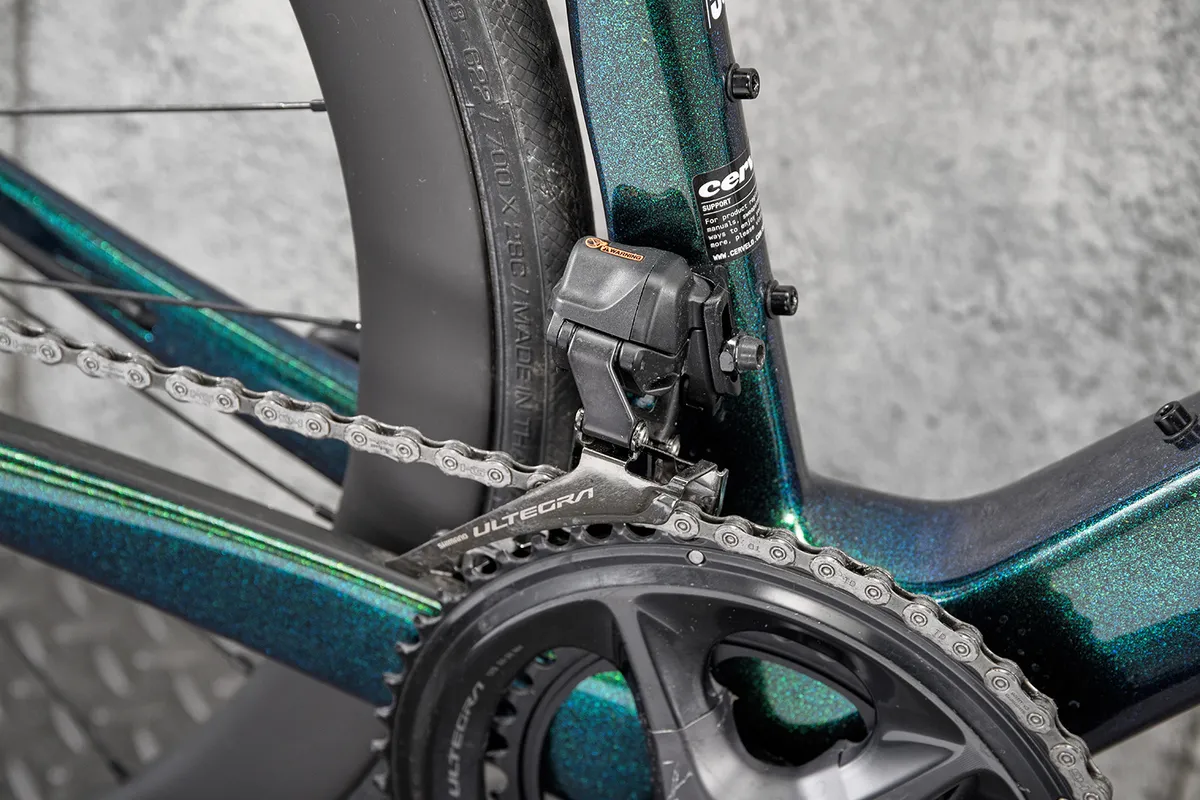
The Caledonia is much more a pure road-based endurance bike in its outlook (even with its 34mm tyre clearance). The frame design takes much of its inspiration from the R-Series and S-Series, with a smattering of the gravel-oriented Aspéro thrown in for good measure.
The front end looks as though it could come straight from the brand’s aero road designs. Its smoothly interlocking fork crown blends seamlessly into the aero-shaped head tube, which then flows into the ST32 stem with its aero-shaped headset and spacers, and fully integrated brake routing.
The rear of the bike features low-slung seatstays that look inspired by the gravel Aspéro, while the D-shaped post, with its neatly hidden clamp, comes straight from R-Series territory.
It all hangs together well, and the Caledonia is a fine-looking bike, with smooth lines, superb integration and details that improve the ride experience.
The down tube has two positions for the bottle cage. If you like to run a single bottle, Cervélo recommends using the lower position because this improves aero.
If you’re running two bottles, using the higher position means both bottles sit in line with each other; not something that’s usually a major consideration on endurance bikes.
There are fine practical touches too.
The ST32 stem comes with a faceplate to fit your bike computer in line with the stem, clearing clutter from your bars and maintaining the clean aesthetics.
At the dropouts, there are removable fender/mudguard mounts that pair with a removable composite bridge for the rear stays. That means throughout the winter months you can run full-length mudguards.
Cervélo Caledonia 5 Ultegra Di2 geometry

The geometry is classic endurance-bike stuff, with a 72-degree head angle that combines with a 50mm fork offset (the R-Series has a 73-degree head angle and 45mm offset).
It means the Caledonia gets a trail figure of 57mm on a 25mm tyre, rising to 60mm on a 30mm tyre (the trail figure comes from a combination of head-tube angle and the fork offset. This measure shows the tyre’s contact point ‘trailing’ behind the steering axis. A small measure of trail makes for a fast-handling bike, more trail slows down the steering response).
To explain that in context, super-fast handling race bikes, such as the Specialized Tarmac, Cannondale SuperSix EVO and the Cervélo R5, have trail figures around 57mm, whereas on more endurance-oriented bikes the trail figure is closer to 60mm – as with the Caledonia running 30mm tyres.
In its off-the-peg guise with 28mm tyres, the Caledonia 5 might have hit on the happy medium between fast and forgiving handling.
The seat angle of 73 degrees is regular road stuff, but the chainstays run out to 415mm, 5mm longer than their racier road designs.
Cervélo claims the longer rear centre, lowering the bottom-bracket height and increasing the trail adds up to a bike with quick handling but more stability for the rigours of racing conditions. It seems Cervélo, even with the Caledonia, hasn’t abandoned its racing roots.
The frame comes in at a claimed 936g and the matched fork 370g (painted, with hardware fitted, and in a size 56cm as tested here). The complete bike, with new 12-speed Shimano Ultegra Di2 and Reserve wheels, weighs 7.95kg (lighter than the equivalent model from 2021).
| | 48 | 51 | 54 | 56 | 58 | 61 |
|---|---|---|---|---|---|---|
| Seat angle (degrees) | 74.5 | 74 | 73.5 | 73 | 73 | 73 |
| Head angle (degrees) | 70.5 | 71.5 | 72 | 72 | 72 | 72 |
| Chainstay (mm) | 415 | 415 | 415 | 415 | 415 | 415 |
| Top tube (mm) | 502 | 522 | 543 | 565 | 581 | 598 |
| Head tube (mm) | 89.5 | 109.9 | 136 | 162.3 | 191.2 | 217.5 |
| Fork offset (mm) | 59 | 53 | 50 | 50 | 50 | 50 |
| Trail (mm) | 60 | 60 | 60 | 60 | 60 | 60 |
| Bottom bracket drop (mm) | 76.5 | 76.5 | 74 | 74 | 71.5 | 71.5 |
| Wheelbase (mm) | 982.20 | 984.50 | 995.20 | 1,012.30 | 1,030.70 | 1,047.80 |
| Standover (mm) | 712 | 752 | 784 | 807 | 834 | 857 |
| Stack (mm) | 505 | 530 | 555 | 580 | 605 | 630 |
| Reach (mm) | 360 | 369 | 378 | 387 | 396 | 405 |
Cervélo Caledonia 5 Ultegra Di2 ride impressions
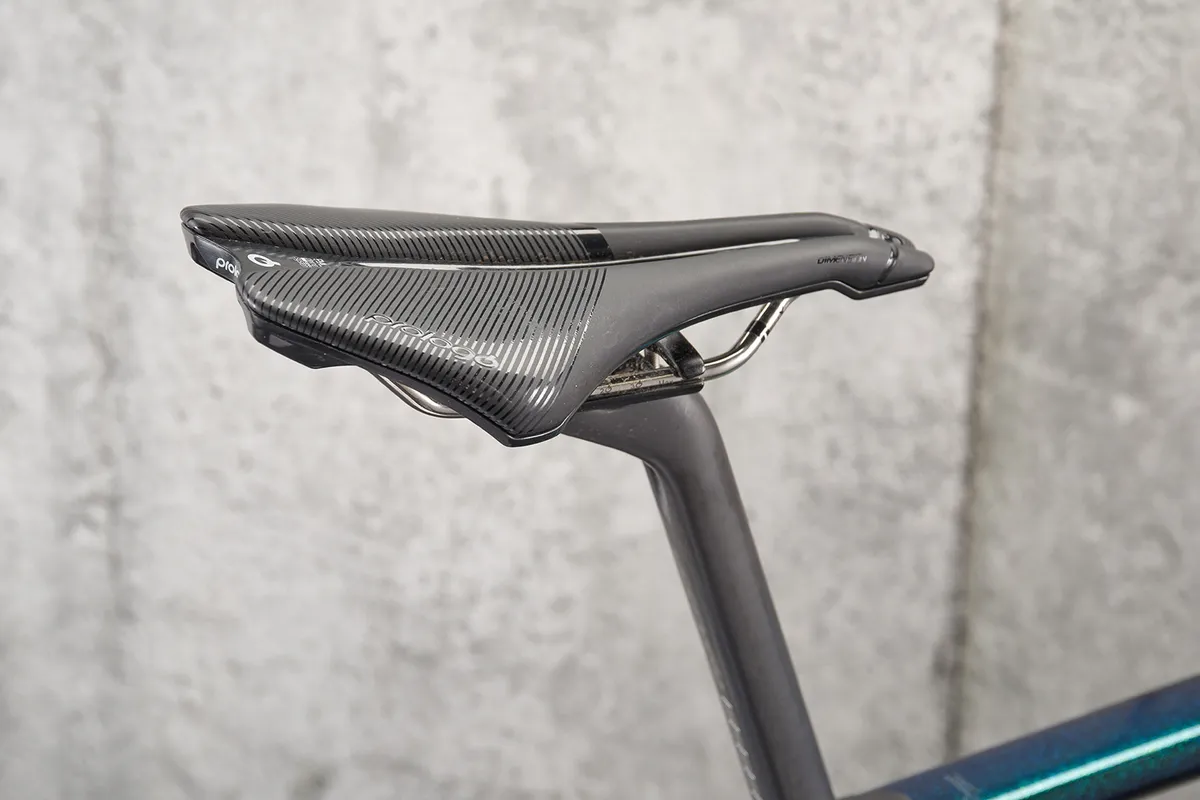
The Caledonia’s roadie origins become immediately apparent. Thankfully, it feels every inch a sporty Cervélo. It reminds me of both R-Series and S-Series bikes with its snappy, responsive frame. The spine of the bike feels rock solid.
The bike accelerates with a proper punch when you stomp on the pedals. It’s every inch a match for its supposedly ‘race bike' rivals. It doesn’t, however, have the downsides of a super-aggressive long, low, stretched rider position that you’ll need a crash course in yoga to live with.
On the flipside, the ride position isn’t so upright that you’ll feel as though you’re on an urban hybrid with drop bars fitted by mistake.
In fact, the ride position also hits a happy middle ground. This 56cm test bike has a 580mm stack height and a 378mm reach. That’s less than on the equivalent Cannondale Synapse, for instance, by 10mm in (stack) height and 9mm shorter in reach.
It’s a more compact riding position, but one that works. I felt more than comfortable on long days of lots of miles, as well as being thrilled by the bike’s responses when turning up the fun factor.
The stiff, responsive chassis doesn’t come at the expense of comfort. I was as comfortable at mile 85 as I was first rolling out of my drive.
That’s thanks to a combination of 28mm tyres sitting on broad 25mm internal rims, superb contact points in the fork of the HB13 carbon bar that’s wrapped in quality tape, and Prologo’s excellent short Dimension saddle. This sits atop the compliant D-shaped SP24 carbon post.
Cervélo Caledonia 5 Ultegra Di2 specification
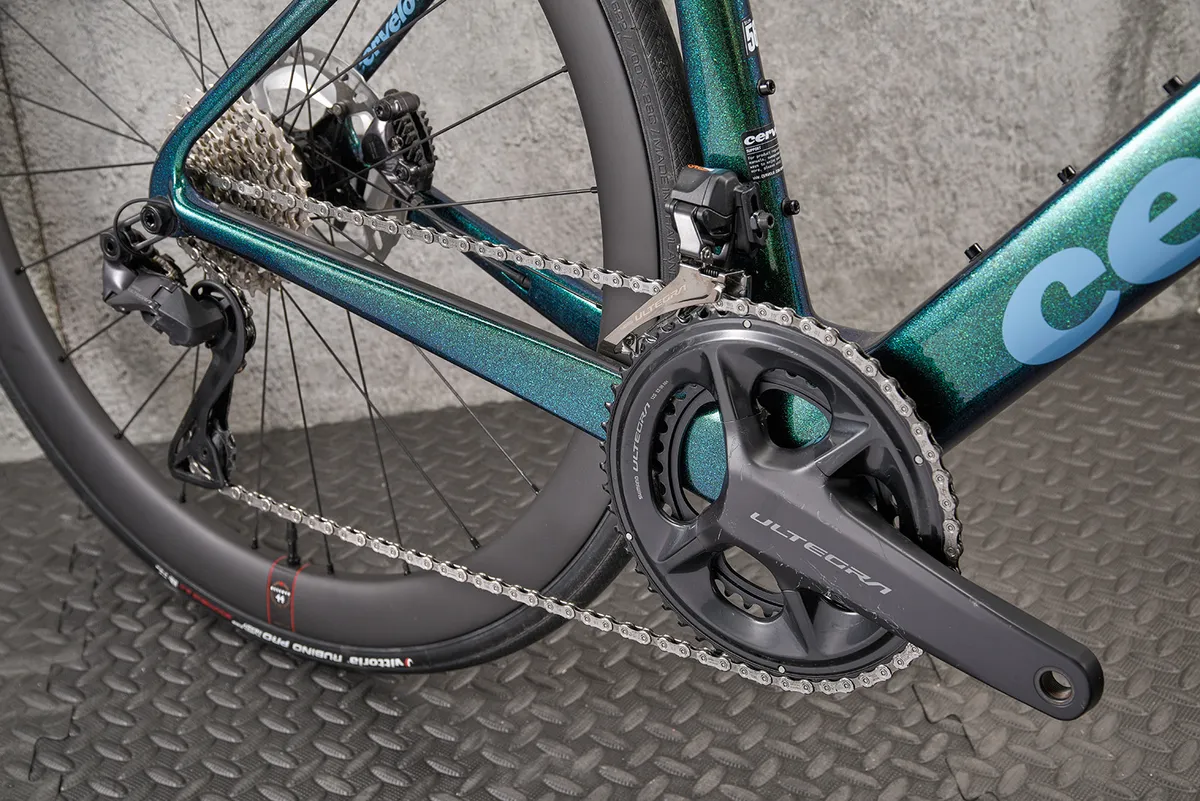
Cervélo’s wheel partner Reserve supplies the slick carbon wheels, with its 40mm-deep front and 44mm-deep rear pairing both running on DT Swiss’ dependable 370 hubs.
The difference in rim height has been seen before from the likes of ENVE. Reserve, however, has also changed the crucial internal width between front and rear. The front gets a broader 25.4mm, while the rear comes in at 25mm.
It shapes up the Vittoria Rubino Pro TLR G2.0 tyres well. The nominal 28mm width is bang on 30mm for the front wheel and just shy of 30mm on the rear.
The Rubino may not be the fastest-feeling tyre, but the latest G2.0 version is an improvement. It feels good and smooth, and I was confident in the grip when testing in some difficult wet conditions.
Come the summer, I’d fit a faster set of tubeless road tyres (Vittoria’s Corsas come to mind), but I didn’t feel short-changed by the Rubinos.
The bike’s new gearing is perhaps the biggest story when compared to last year’s model, with Shimano’s new 12-speed, semi-wireless Di2 making its long-awaited appearance.
Ultegra Di2 8150 retains the more traditional gearing we’re familiar with, rather than SRAM’s smart rebalancing on AXS 12-speed. That means the Caledonia 5 gets a racy 52/36 chainset, along with a wide 11-34 cassette.
The new Ultegra Di2 has become semi-wireless. That means the STI levers communicate wirelessly with the rear derailleur (where the ‘brain’ of the system lives).
It means a very clean-looking front-end, like SRAM eTap AXS. Plus, all of a sudden, there are a lot of bicycle frames with blanking plates where the old-style Di2 junction box used to reside.
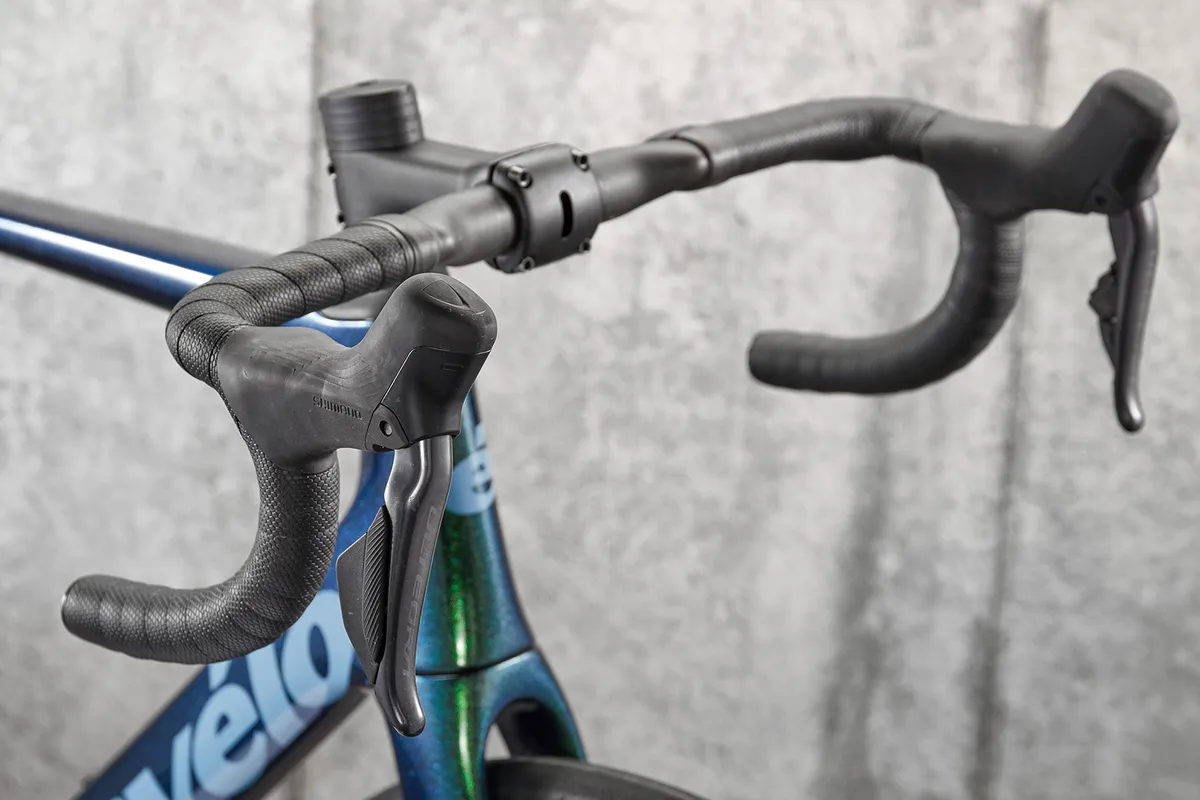
Like SRAM, the levers now rely on one CR1632 coin cell battery each. Shimano claims you’ll get one and a half to two years of use from these disposable batteries.
Both derailleurs still use a large-capacity rechargeable battery that lives in the seatpost and is wired to both gear changers. Shimano claims 1,000km between charges for the battery.
The charging is a much simpler affair than before, with a MacBook-style magnetic port for the dedicated cable on the rear derailleur.
The biggest leap, however, is the inclusion of Bluetooth connectivity between the drivetrain and Shimano’s E-Tube app. That results in simple firmware upgrades and system monitoring, along with tunability in the form of synchronised and semi-synchro shifting.
You can set the bike to shift the front derailleur automatically when shifting the rear (synchro), or get the rear derailleur to ‘compensate’ when you shift up front (automatically putting the rear into the next best gear).
The addition of Bluetooth also means you can set the hidden buttons atop the Ultegra levers to operate a third-party head unit.
I set mine to switch screens on my Garmin Edge, which means not having to take your hand off the bars to access ride data screens. It also means your head unit can display vital Di2 information such as battery level and gear selection.
This not only brings Di2 into line with SRAM’s AXS (though the E-Tube app isn’t quite as evolved or user-friendly as SRAM’s AXS), but more importantly it gives you access to the wider capabilities that up until now haven’t been easily accessed (unless you paid for the wb-111 Bluetooth aerial to be fitted on older Di2 systems).
Ultegra Di2 shares the same motors and circuitry as the new flagship Dura-Ace Di2, so has the same claims from Shimano of faster shifting of 58 per cent and 45 per cent for rear and front derailleurs respectively.
On the road, however, it’s a difficult thing to judge or quantify.
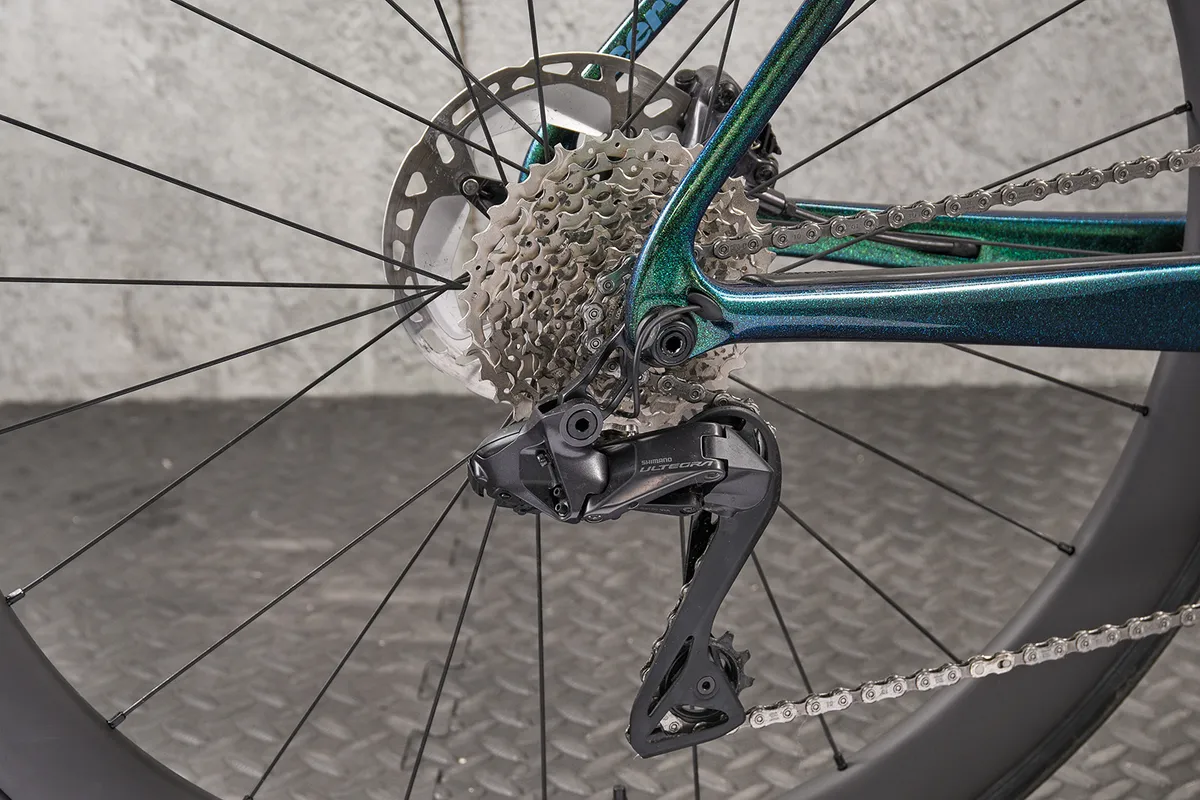
The older 11-speed Di2 wasn’t a slouch when it came to changing gear, doing so in fractions of a second. So, a lesser fraction of a second is difficult to ‘feel’. What I am convinced by, though, is how slick the changes are, especially up front.
The addition of a 12th gear has improved things too. It’s especially prevalent on the 11-34. What was a widely spaced gear set now gets single-tooth jumps for the first five gears (11 to 15), rising to two-tooth steps (17/19/21) and then three (21/24/27/30), with the only four-tooth steps for the lightest 34-toothed sprocket.
The Caledonia’s gearing is well pitched for the bike’s intended audience. Its 52/36 chainset means you have all the high-speed potential for the flat or descents, while not hampering the other end of the scale when challenging yourself on steep, sharp ascents.
Shifting is better too, with a more defined step between the Di2 buttons. Textural changes feel better, especially when wearing full winter gloves.
Shimano has done an excellent job of updating the braking with a subtly reworked lever and hood shape. The hood is slightly raised, but slimmer, and the lever has a slight inward curve. It feels reminiscent of the brilliant GRX Di2 shape.
When down in the drops, the reshaping gives more hand clearance, yet the levers feel easier to reach. From the hoods, the ergonomics are superb. Wrapping three fingers around the lever without a stretch means control is greatly improved.
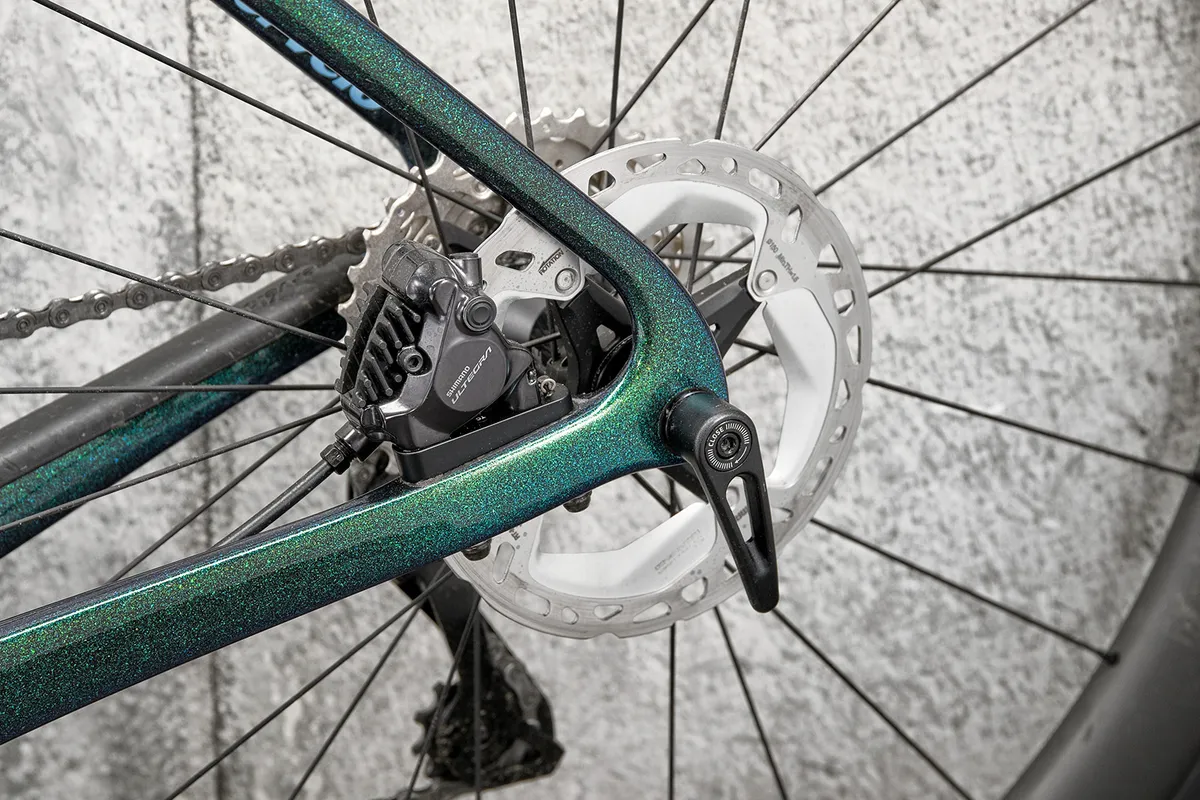
This is combined with Shimano’s Servowave design (as found on GRX), which greatly reduces the amount of free lever travel before the brake engages. This means much more subtlety in control of the braking.
The levers now also have proper reach adjustment of over 1.6cm at the tip of the lever. It’s great for smaller hands.
The brake feel is vastly improved over 11-speed, allowing for much more progressive and nuanced braking, which meant I never ‘over’ braked heading into a corner, making for more consistent speed.
With the new Ultegra, Shimano’s road disc braking has very much come of age and the potential has been realised. You can add to that the rotor/brake-pad interface, which stayed rub- and noise-free even in some wet, grimy conditions.
Cervélo offers the Caledonia 5 in full Dura-Ace Di2 with much of the same equipment for around £3,700 more, but on this evidence and considering Dura-Ace Di2 saves only 278g, I’d be more than convinced to save that chunk of money because the performance is going to be much the same for all the important parts.
Cervélo Caledonia 5 Ultegra Di2 bottom line
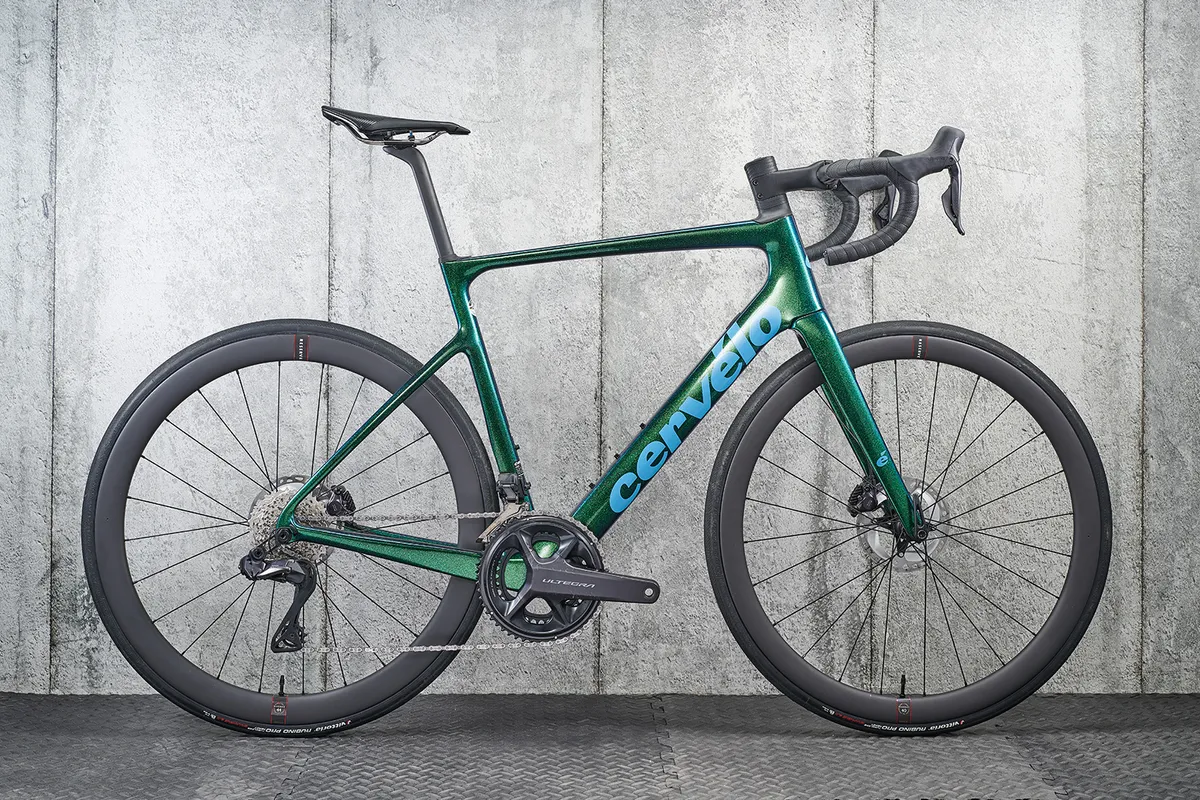
The new Caledonia 5 Ultegra Di2 is without doubt a better bike than the previous model. Cervélo has upped the stakes significantly and the subtle spec changes and weight reduction contribute to making a top-scoring bike even better. There is, however, a £1,200 elephant in the room.
You see, in 2020 when the original Caledonia 5 U-Di2 first graced my testing plans, it was priced at £5,799. That’s not cheap, but I could just about justify the price thanks to the quality of the ride and the build. At £6,999.99, it’s quite a jump.
The price increases across the board for road bikes are somewhat galling thanks to a perfect storm of pressures hitting the industry. Material and product shortages, skyrocketing fuel prices and shipping costs are all having an impact, with the effects of the pandemic and, in the UK, Brexit also factors.
With all that taken into consideration, the Caledonia 5 still comes in more expensive than its main rivals: Cannondale’s Ultegra Di2-equipped Synapse Carbon 2 RLE is £5,800, the Specialized Roubaix Expert is £6,850 and the Giant Defy Advanced Pro 1 £4,999.
I loved getting reacquainted with the brilliant Caledonia 5, it’s one of the best of its breed. At this price, however, you’re paying a premium for the experience.
Endurance Bike of the Year 2022 | How we tested
The best endurance road bikes combine a comfortable ride position with heaps of versatility – including features such as mudguard or pannier rack mounts – and speed, to create a useful platform that will fare well no matter the ride.
Testing for our 2022 Endurance Bike of the Year category began with a high-tempo 2.5-hour ride to get an early impression of a bike's ride quality and to carry out any adjustments.
For the meat of this year's testing, each bike was taken on the same 82-mile/132km loop through rural Wiltshire.
After this, we rode the bikes back-to-back, coming to a decision on the best by comparing how well each handled across a variety of terrain and, in a competitive market, how its spec compares with the other bikes on test.
Our 2022 Endurance Bike of the Year contenders are:
- BMC Roadmachine X
- Bombtrack Audax
- Cannondale Synapse Carbon LTD RLE (category winner)
- Cervélo Caledonia Ultegra Di2
- Trek Domane SL 6 eTap
Thanks to…
Thanks to our sponsors HUUB, Lazer, 100% and Garmin for their support in making Bike of the Year happen.
Product
| Brand | cervelo |
| Price | 7000.00 GBP,7300.00 USD |
| Weight | 7.9500, KILOGRAM (56cm) - |
Features
| Fork | Carbon |
| br_stem | Cervélo ST32 |
| br_chain | Shimano CN-M8100, 12 spd |
| br_frame | Carbon |
| Tyres | Vittoria Rubino Pro 28mm tubeless tyres |
| br_brakes | Shimano Ultegra 8170 hydraulic disc |
| br_cranks | Shimano Ultegra 8100 52/36 |
| br_saddle | ProLogo Dimension Tirox |
| br_wheels | Reserve 40/44mm carbon tubeless rims on DT Swiss 370 hubs |
| br_shifter | Shimano Ultegra Di2 8170, 12 spd |
| br_cassette | Shimano Ultegra CS-R8100, 12 spd, 11-34 |
| br_seatpost | Cervélo SP24 carbon |
| br_handlebar | Cervélo HB13 carbon |
| br_bottomBracket | JY-BB 24 |
| br_availableSizes | 48, 51, 54, 56, 58, 61cm |
| br_rearDerailleur | Shimano Ultegra Di2 8150, 12 spd |
| br_frontDerailleur | Shimano Ultegra Di2 8150, 12 spd |
| Features | Extras: Cervélo faceplate front GPS mount, Cervélo rear accessory mount, removable fender mounts |
